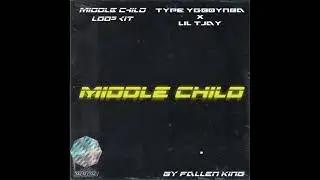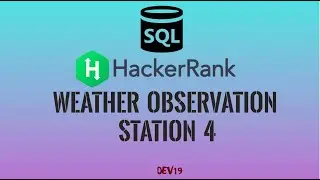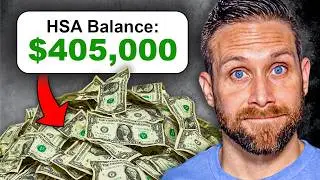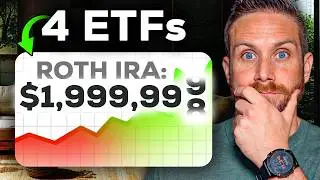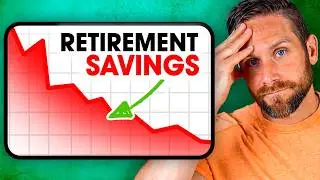Do This Before You Invest In a Roth IRA
In this video, I'll go through the things you need to do before investing in a Roth IRA.
FlexiSpot is currently running a limited-time promotion where you can get up to 50% off on standing desks and ergonomic chairs. Plus, there's an exclusive "Buy One Get One Free" event on the 28th. Join in on the excitement, and good luck!
If you decide to purchase FlexiSpot products using this link, I'll earn a small commission: https://bit.ly/3PSQHCk
Check Out My Recommendations (It helps support the channel):
🔥 M1 FINANCE Investing- Free $10 (once you deposit at least $100 within 30 days) https://bit.ly/427KBBn
📚 Here's a video on how to use M1 Finance • M1 Finance Investing Tutorial For Beg...
📝 NewRetirement - The retirement planning tool I personally use to make sure I'm on track with saving for retirement. It's perfect for "Do it yourself" investors https://bit.ly/3EAAhrJ
🔒 AURA - 14 day free trial to see if your personal information has been leaked online and have it removed https://aura.com/jarrad
📧 Business Inquiries: [email protected]
A Roth IRA (Individual Retirement Account) is a type of retirement savings account in the United States that offers several tax advantages. Here's a breakdown of its key features and how it works:
Post-Tax Contributions: Unlike traditional IRAs, where contributions may be tax-deductible, contributions to a Roth IRA are made with after-tax dollars. This means you don't get a tax deduction for the money you put into a Roth IRA.
Tax-Free Withdrawals: The primary benefit of the Roth IRA is that qualified withdrawals are tax-free. Given that the contributions were already taxed, the principle can always be withdrawn without penalties. Moreover, once the account has been open for at least five years and the account owner is at least 59½ years old, all withdrawals (including earnings) are tax- and penalty-free.
No Required Minimum Distributions (RMDs): Unlike traditional IRAs, Roth IRAs don't have RMDs during the lifetime of the original owner. This means you're not required to start taking money out at age 72 (or 70½ if you turned 70½ before January 1, 2020).
Income Limits: Not everyone can contribute to a Roth IRA. Eligibility is based on your modified adjusted gross income (MAGI). The IRS sets income limits that determine whether you can contribute, and how much you can contribute. If your income is too high, you might not be able to contribute to a Roth IRA.
Contribution Limits: As of my last update in 2022, the annual contribution limit for a Roth IRA is $6,000 for individuals under age 50, and $7,000 for those age 50 and older (these limits are subject to change based on inflation and IRS guidelines).
Flexibility: Roth IRA contributions can be withdrawn any time without penalty, which provides some flexibility. However, it's important to note that this doesn't apply to earnings – if you withdraw the earnings before meeting the qualifying criteria, you may face taxes and penalties.
Conversion: Some people might opt for a "backdoor Roth IRA" if they earn too much to contribute directly to a Roth IRA. This involves contributing to a traditional IRA and then converting that to a Roth IRA. It's a nuanced strategy and can have tax implications, so consulting with a financial advisor is recommended.
Even with all of those benefits, there are some things you're going to want to focus on before investing a Roth IRA which is what we touch on in this video. They include maxing out your health savings account, investing up your employer match, paying off high interest debt, and a few other things.
Affiliate Disclaimer: Some of the above may be affiliate links. Support the channel by signing up or purchasing through those links at no additional cost to you. I appreciate you for helping me keep this channel running.
Disclaimer: This video is for entertainment purposes only. Everyone's situation is different so do your own research before making any decisions with your money.

![NEFFEX - Fight Back [THIS IS WHY WE RIDE 4K]](https://images.videosashka.com/watch/qVrKFUAvR0I)

